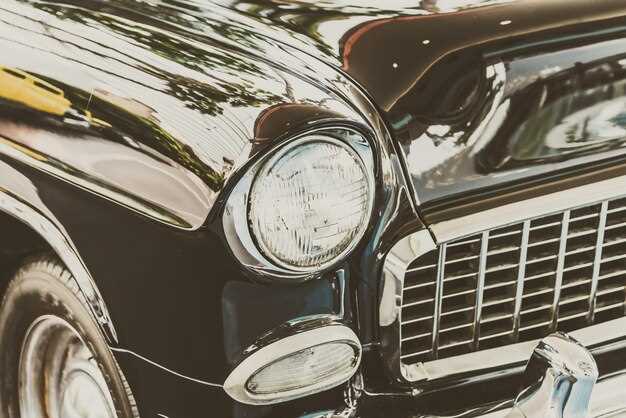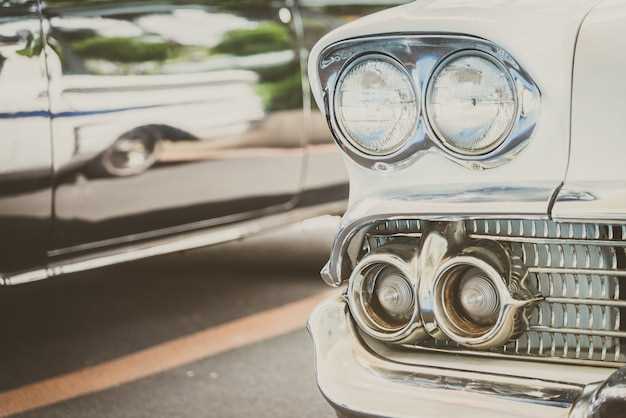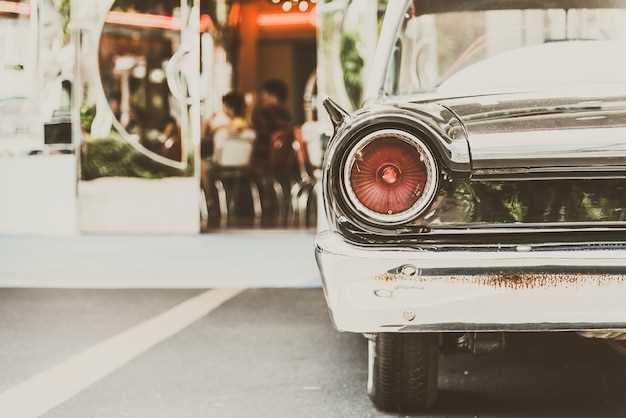
The art of restoration has become a revered obsession for car enthusiasts over the last decade, particularly when it comes to classic vehicles. These magnificent machines, often characterized by their timeless design and historical significance, have attracted a dedicated following of restorers eager to breathe new life into them. Each project serves not only as a tribute to automotive craftsmanship but also as a testament to the enduring appeal of classic cars.
Throughout the years, numerous projects have captured the attention and admiration of the automotive community. From iconic models that defined eras to rare gems that have long been forgotten, restoration efforts have focused on reviving these classic automobiles to their former glory. Enthusiasts painstakingly source original parts, employ skilled craftsmen, and utilize advanced techniques to ensure that each vehicle retains its authentic character while benefiting from modern enhancements.
In this article, we will explore some of the most notable classic car restoration projects of the last decade. We will delve into the stories behind these vehicles, the challenges faced by their restorers, and the passion that drives this extraordinary endeavor. Whether you are a seasoned collector or simply an admirer of classic cars, the journeys of these restorations will inspire and ignite your appreciation for automotive history.
Top Classic Car Builds to Inspire Your Restoration Journey
Classic car restoration projects have gained immense popularity over the last decade, showcasing creativity and engineering skills. Among the most inspiring builds, the 1969 Ford Mustang stands out with its blend of nostalgia and modern performance. This iconic muscle car often undergoes meticulous restorations, featuring upgraded engine components and contemporary suspension systems, making it a favorite among car enthusiasts.
Another noteworthy build is the 1973 Porsche 911. The classic silhouette of this sports car provides a canvas for skilled restorers to enhance its performance while maintaining its original charm. Many restorations incorporate cutting-edge technology, such as modern braking systems and lightweight materials, to elevate driving experience without sacrificing aesthetics.
The Chevrolet Corvette, especially the C2 model from the 1960s, also garners attention. Restorers often replace original parts with high-performance alternatives, achieving a perfect balance of vintage appeal and enhanced capabilities. Builders frequently focus on engine upgrades, ensuring that the vehicle not only looks stunning but also performs exceptionally well on the road.
A less common but equally impressive build is the Volkswagen Type 2 Bus. Its restoration often emphasizes originality, with many projects striving to retain the classic look while integrating modern conveniences. Electric conversions have gained traction, allowing these beloved vehicles to be environmentally friendly without losing their unique character.
Lastly, the 1957 Chevrolet Bel Air remains a quintessential classic that captures the essence of American automotive culture. Restoration projects frequently celebrate this car’s design, with vibrant color schemes and chrome accents. Builders often focus on complete restorations while incorporating subtle updates to ensure reliability and comfort for modern driving.
These top classic car builds serve as inspiration for anyone looking to embark on their restoration journey. Whether you prefer the thrill of a muscle car or the charm of a vintage bus, there is a project for everyone that reflects personal tastes and skills in the world of classic car restoration.
Key Challenges in Restoring Vintage Vehicles

Restoring vintage vehicles presents a unique set of challenges that can significantly impact the overall success of the project. One of the primary issues is sourcing rare parts. Many classic cars were produced in limited quantities, making it difficult to find original components necessary for authentic builds. This can lead to increased costs and extended timelines as restorers seek out the correct replacements or decide between original and aftermarket options.
Another challenge is the condition of the vehicle itself. Many vintage cars have suffered from years of neglect, exposure to the elements, or poor-quality repairs. This can result in extensive rust, structural damage, and a myriad of mechanical issues. Restorers must assess the extent of damage carefully and determine the validity of pursuing a full restoration versus a partial one.
Skill and Expertise play a significant role in the restoration process. Each vehicle may require specialized knowledge in areas such as bodywork, engine rebuilding, or electrical systems. Lack of experience can lead to subpar results, affecting the functionality and value of the restoration. It is essential for restorers to either possess these skills or seek out professionals who specialize in vintage car restoration.
Furthermore, the financial investment associated with restoration projects can be daunting. Restorers often encounter unexpected expenses that arise during the process, such as needing to address hidden problems or upgrading outdated components to meet safety regulations. Budget management becomes critical to avoid project abandonment due to financial strain.
Lastly, maintaining the spirit of the original vehicle while making necessary updates presents an ongoing debate among restorers. Balancing authenticity with modern performance improvements can be contentious, influencing decisions on how to approach the build. To achieve a faithful restoration, knowledge of period-correct techniques and materials is essential.
Determining the Right Parts and Resources for Your Project

When embarking on a classic car restoration project, identifying the right parts and resources is crucial for successful builds. Start by researching the specific make and model you are working on. Authenticity is vital, and sourcing original parts or high-quality reproductions can significantly affect the overall finish and value of your project.
Utilize online forums and communities dedicated to classic cars, where experienced restorers share insights and advice. Platforms like these provide guidance on where to find rare parts and which suppliers have the best reputations. Networking with fellow enthusiasts can lead to valuable recommendations for vendors specializing in the specific model you are restoring.
Consider joining classic car clubs or local restoration groups. These organizations often hold swap meets or have members looking to sell spare parts. Engaging with other restorers can help you find resources that may not be readily available online, creating opportunities to obtain parts at lower prices or even through trades.
Researching aftermarket suppliers is also essential, as many companies specialize in producing high-quality parts for classic builds. These manufacturers often provide components that improve safety and performance while maintaining the original look of the vehicle. Ensure that the parts you select meet safety and quality standards by looking for user reviews and testimonials.
Finally, don’t underestimate the importance of manuals and service guides specific to your classic car. These resources are invaluable for understanding the correct specifications for parts and assembly procedures. Having every detail at your fingertips will streamline the restoration process and help ensure a successful outcome.


